How to Make Compost Quickly: The Ultimate Easy Guide for Fast Result
- February 14, 2024
- 6 comment
Transform kitchen scraps into rich, garden-boosting compost faster than you thought possible. Traditional composting can take ages, but this guide will show you how to compost faster using quick, easy steps that fit right into your routine. Say goodbye to long waiting times and discover fast composting methods that will have you creating nutrient-rich soil in no time.
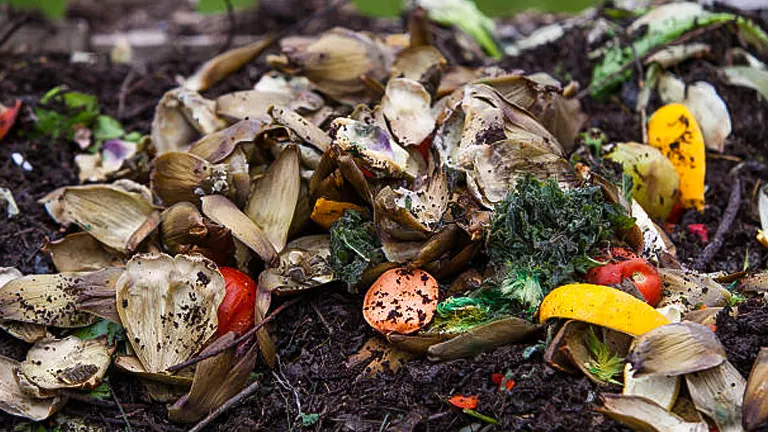
By carefully balancing green and brown materials, you can speed up composting and turn waste into valuable garden soil. Understanding how to manage these materials and create the right conditions for rapid decomposition is key to fast composting methods. This approach helps you transform everyday waste into a garden treasure, supporting a lush, vibrant garden with each step.
Step-by-Step Guides on How to Make Compost Quickly
- Getting the Right Mix
- Cutting Materials Down to Size
- Using Natural Activators
- Optimize the Pile for Quick Decomposition
- Regular Monitoring and Adjustment
- Harvesting Your Compost
Understanding Composting Basics

Composting is simply nature’s way of recycling organic matter. For fast composting, you’ll need a balanced mix of green and brown materials, along with air and water. Greens, rich in nitrogen, keep the pile moist and speed up decomposition, while browns, high in carbon, add bulk and improve airflow. Proper aeration and moisture are essential for speeding up composting, allowing organic waste to break down quickly into nutrient-rich humus. With the right balance, you’ll be composting in 14 days or less!
Science in Composting
- Microbial Dynamics: A compost pile is teeming with microbes like bacteria, fungi, and actinomycetes, which drive the decomposition process, turning organic matter into stable humus. These microbes thrive best with a carbon-to-nitrogen (C) ratio of 25:1 to 30:1, which provides the balanced “diet” they need for rapid composting. This optimal ratio helps microbes work efficiently, speeding up the transformation of waste into nutrient-rich compost.
- Thermophilic Phase: In rapid composting, the thermophilic phase plays a vital role. During this phase, temperatures rise between 131°F (55°C) and 155°F (68°C), effectively killing pathogens and weed seeds. This heat is essential for breaking down tougher materials, like plant fibers, proteins, and fats, which normally resist decomposition.
- Aeration Techniques: Effective aeration, like turning the pile or using aerated static piles with blowers, greatly improves oxygen supply and prevents anaerobic (oxygen-poor) conditions. Keeping the compost aerobic is essential for maintaining high temperatures and ensuring microbes can digest materials efficiently, speeding up the composting process.
- Moisture and Porosity: Moisture is essential for composting, with an ideal level of 50-60%. This balance allows water to fill micro-pores in the material, giving microbes easy access to nutrients while preserving air spaces for gas exchange. Maintaining this moisture level is key to speeding up decomposition.
Key Parameters for Optimized Composting
| Parameter | Description | Optimal Range | Impact on Composting Process |
|---|---|---|---|
| C:N Ratio | Balance between carbon and nitrogen in the compost materials. | 25:1 to 30:1 | Ensures efficient microbial growth and rapid decomposition. |
| Temperature | Heat generated by microbial activity. | 131°F to 155°F (55°C to 68°C) | Speeds up decomposition, kills pathogens and seeds. |
| Oxygen Concentration | Level of oxygen within the pile for aerobic decomposition. | Above 5% | Prevents anaerobic conditions, supports thermophilic microbes. |
| Moisture Content | Amount of water in the compost material. | 50-60% | Sustains microbial life, aids in nutrient solubilization. |
Optimizing composting involves a detailed understanding of the bio-chemical processes at play. By manipulating the C: N ratio, maintaining high temperatures through the thermophilic phase, ensuring adequate aeration, and controlling moisture levels, rapid and efficient composting can be achieved. This not only accelerates the production of high-quality compost but also enhances the overall sustainability of gardening practices, turning organic waste into an asset for soil health and plant growth.
Step-by-Step Guides on How to Make Compost Quickly
Step 1: Getting the Right Mix

The key to fast composting begins with a balanced mix of greens and browns to maintain an ideal carbon-to-nitrogen ratio. Greens such as grass clippings, vegetable peels, and coffee grounds provide nitrogen, while browns, like dried leaves, straw, and shredded cardboard, add carbon. Sorting your materials into these categories sets the foundation for quick decomposition, helping you make compost efficiently.
Step 2: Cutting Materials Down to Size
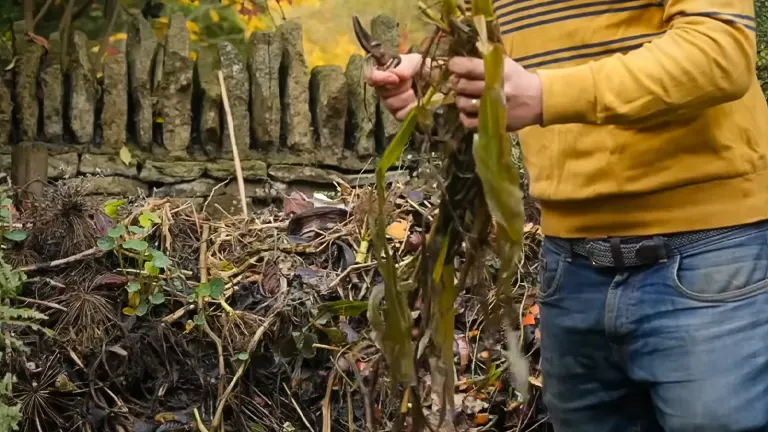
Breaking down compost materials into smaller pieces increases their surface area, allowing microbes to work faster. Chopping or shredding items like leaves and vegetable scraps speeds up their decomposition. While shredders are helpful, simple tools like pruning shears or a lawnmower work well for most home composters. This step can significantly cut down the time needed for your compost pile to turn into rich, garden-ready soil.
Step 3: Using Natural Activators
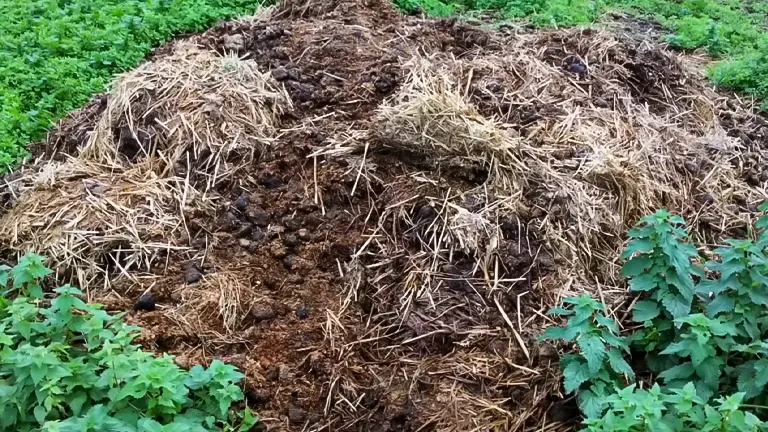
Boost your compost pile naturally with activators instead of commercial products. Herbivore manures, like those from chickens or horses, or even nitrogen-rich “liquid gold” (human urine), can accelerate decomposition. If you prefer other options, coffee grounds are an excellent alternative. These activators add nitrogen to the pile, enhancing microbial activity and speeding up the breakdown of organic matter.
Step 4: Optimize the Pile for Quick Decomposition

To speed up composting, build your pile with alternating layers of greens and browns. This layering method maintains a balanced nutrient mix and promotes better air circulation. By adding a layer of browns after each layer of greens, you prevent matting and keep the pile aerated, helping it break down more quickly.
The size of your compost pile plays a crucial role in heat retention and decomposition speed. Aim for a pile that’s at least 3 feet high and wide large enough to hold heat effectively but small enough for air to reach the center. This optimal size helps maintain the high temperatures needed for quick, efficient composting.
Step 5: Regular Monitoring and Adjustment

Heat levels in your compost pile indicate its activity. Using a compost thermometer, aim to keep the core temperature between 135-160°F (57-71°C). This range is ideal for killing weed seeds and pathogens while promoting rapid decomposition.
If your compost temperature drops or decomposition slows, it may be time to turn the pile or adjust the moisture. A dry pile won’t decompose efficiently, while an overly wet pile can become anaerobic. Turning the pile reintroduces oxygen and helps balance moisture, keeping the composting process on track.
Step 6: Harvesting Your Compost
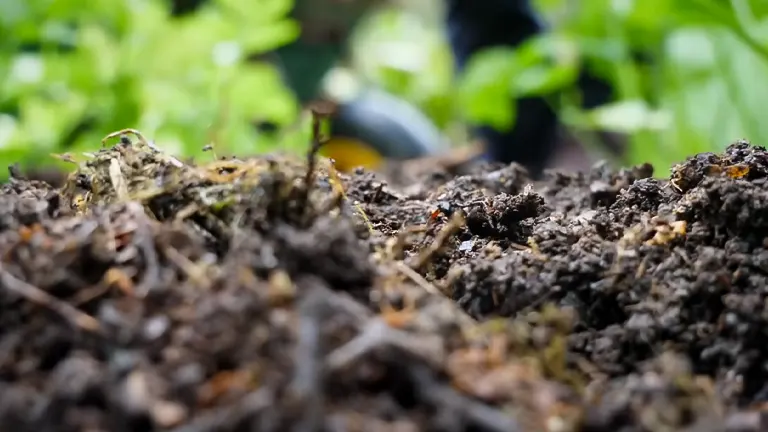
Mature compost will be dark, crumbly, and have an earthy smell. Depending on materials and conditions, it can take a few months to a year to fully decompose. If you’re unsure, try the bag test: seal a small amount of compost in a bag for a few days. If it smells sour or unpleasant when opened, it likely needs more time to mature.
Finished compost is a versatile soil enhancer. Mix it into garden beds to improve soil structure, boost moisture retention, and add nutrients. You can also use it as a top dressing for lawns or as an ingredient in potting mixes, giving plants a natural nutrient boost.
Maintaining the Right Conditions
To keep your compost decomposing quickly, ensure it stays aerated and moist. Regularly turning the pile, ideally every one to two weeks or after adding new material reintroduces oxygen and prevents anaerobic conditions that cause odors and slow down decomposition. Turning also helps distribute air and moisture, boosting microbial activity and heating the pile for a faster breakdown.
Moisture is crucial for composting; the pile should feel like a wrung-out sponge moist but not soaking. In dry conditions, sprinkle water over the pile as you turn it. If it’s too wet, add more browns to absorb excess moisture and improve airflow. Keeping this balance prevents the compost from becoming compacted and smelly.
Building Your Compost Heap
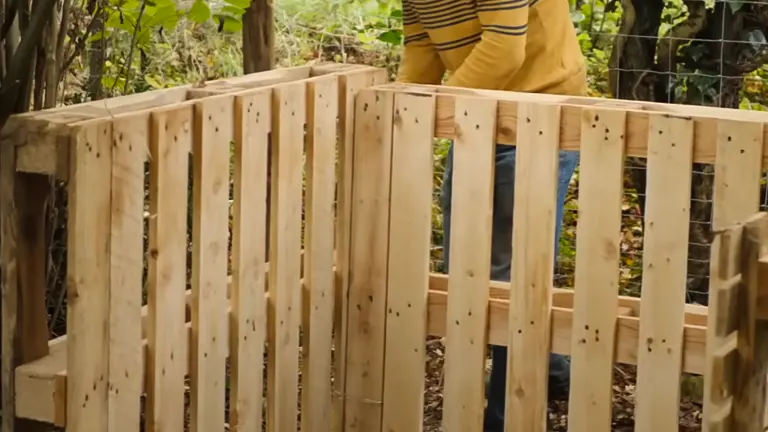
When creating a new compost heap, choose a spot where it can sit directly on the soil, allowing worms and microorganisms easy access. For structure, consider repurposing pallets into a bin by securing them together. This approach recycles materials and provides ample airflow, which is essential for fast composting.
Begin your compost pile with a layer of twiggy, brown materials to improve drainage and aeration at the base. Then, add alternating layers of greens and browns to keep the balance for efficient decomposition. Including a variety of ingredients in your compost also enriches the final product, creating a nutrient-rich soil amendment.
Essential Components for Building an Effective Compost Heap
| Component | Description | Tips for Optimization |
|---|---|---|
| Location | Partially shaded, well-drained area | Facilitates accessibility and proper environmental conditions |
| Foundation | Directly on soil, possibly with wire mesh | Enhances organism access while deterring rodents |
| Structure | Repurposed pallets or bins | Ensures proper aeration and accessibility |
| Layering | Alternating greens and browns | Balances nitrogen and carbon for optimal decomposition |
| Microbial Boosters | Soil, compost, or inoculants | Introduces beneficial microbes to accelerate decomposition |
| Aeration Strategies | Twiggy base, PVC pipes | Promotes oxygen flow essential for aerobic composting |
| Moisture Management | Water sprinkling, breathable cover | Maintains ideal moisture levels for microbial activity |
Practical Tips and Troubleshooting
Even with careful management, compost piles can encounter issues. If your compost is not decomposing quickly, check for the following:
1. Balancing Greens and Browns: Achieving the right balance between nitrogen-rich greens and carbon-rich browns is crucial for a healthy compost pile. An imbalance can lead to slow decomposition or odor problems.
- Tip: Aim for a ratio of about 3 parts browns to 1 part greens by volume. If the pile is too wet and smelly, add more browns. If it’s too dry, add more greens.
2. Managing Moisture Levels: Compost piles need moisture to support the microbial activity essential for decomposition, but too much or too little can hinder the process.
- Tip: The compost should feel like a wrung-out sponge. If it’s too dry, add water or wet greens. If too wet, turn it more frequently and add dry browns to absorb excess moisture.
3. Ensuring Adequate Aeration: Oxygen is vital for aerobic decomposition. Lack of aeration can lead to anaerobic conditions, causing odors and slowing down the composting process.
- Tip: Turn your pile regularly to introduce air. If turning is difficult, consider adding bulky items like branches or aerating tools to create air passages.
4. Accelerating Decomposition: Sometimes compost piles can take longer to break down than expected, due to various factors including temperature, moisture, and material size.
- Tip: Chop or shred larger items to increase surface area for microbes. Also, ensure the pile is large enough to retain heat, aiming for at least 3x3x3 feet.
5. Dealing with Pests and Rodents: Compost piles can attract unwanted visitors like rodents and insects, particularly if kitchen scraps are exposed.
- Tip: Bury kitchen scraps deep within the pile and consider a compost bin with a lid or mesh sides to deter pests. Avoid composting meat, dairy, and oils, which are more likely to attract pests.
6. Eliminating Bad Odors: A healthy compost pile should have an earthy smell. Bad odors usually indicate anaerobic decomposition due to excess moisture or lack of oxygen.
- Tip: Turn the pile to introduce oxygen and add more browns to soak up excess moisture. Ensure the pile is not overly compacted.
7. Jumpstarting a Stalled Pile: If your compost pile isn’t heating up, it may have stalled due to an imbalance in materials, moisture, or lack of microbes.
- Tip: Add a shovelful of finished compost or garden soil as a microbial inoculant. Check and adjust moisture and C:N ratio as needed.
8. Composting in Cold Weather: Composting slows down in colder temperatures as microbial activity decreases.
- Tip: Insulate your pile with a thick layer of browns like straw or leaves to retain heat. Consider a compost tumbler or bin to keep the process going through winter.
Remember, composting is a natural process, and slight adjustments can often rectify issues. Don’t be discouraged by setbacks; each challenge is an opportunity to learn and improve your composting practice.
Conclusion
In conclusion, making compost quickly is a straightforward and rewarding process that enhances your garden’s health and sustainability. By maintaining the right balance of green and brown materials, ensuring adequate moisture, and regularly turning the pile, you can accelerate the composting process and produce rich, nutrient-dense compost in just a few months. This simple guide empowers gardeners of all levels to efficiently recycle organic waste into valuable soil amendment, fostering a greener, more vibrant garden.
FAQs
- Can I really make compost fast? How quick is it?
Yes, you can significantly speed up the composting process by following specific steps such as balancing your green (nitrogen-rich) and brown (carbon-rich) materials, maintaining proper moisture, and turning the pile regularly to introduce oxygen. Depending on these factors, compost can be ready in as little as 2-3 months. - What are the best materials to add to my compost to make it decompose faster?
To accelerate decomposition, add a balanced mix of green materials like vegetable scraps, coffee grounds, and grass clippings for nitrogen, and brown materials such as dry leaves, straw, and shredded paper for carbon. Adding natural activators like well-rotted manure can also speed up the process. - How often should I turn my compost pile?
Turning your compost pile every 1-2 weeks helps introduce oxygen, which is crucial for rapid decomposition. If you notice your compost pile is not heating up, turning it more frequently can help reinvigorate the process. - Is it possible to make compost in winter?
Yes, you can make compost in winter, but the process will slow down as temperatures drop. To help maintain activity, insulate your compost pile with a thick layer of browns, like straw or leaves, and consider using a compost bin to retain heat better. - How wet should my compost pile be?
Your compost pile should have the moisture content of a wrung-out sponge. If it’s too dry, microbial activity will slow down, delaying decomposition. If it’s too wet, the pile can become anaerobic and smelly. Adjust moisture levels by adding greens to dry piles or browns to wet piles. - Can I add weeds to my compost?
Yes, but with caution. Weeds can be added to your compost pile if they haven’t gone to seed. Hot composting, where the pile reaches between 135-160°F, can kill weed seeds and pathogens, making it safer to use the resulting compost in your garden. - What should I do if my compost pile starts to smell?
A smelly compost pile usually indicates an imbalance, often too much moisture and not enough air. Turn the pile to introduce oxygen and add brown materials to absorb excess moisture. This should eliminate odors and help restore balance to your compost. - How do I know when my compost is ready to use?
Finished compost will be dark, crumbly, and have an earthy smell, without any recognizable food or yard waste. It typically takes a few months to reach this stage if maintained properly. If you’re unsure, let a small amount sit for a few days; if it doesn’t heat up, it’s ready to use.
And there you have it—a straightforward path to speedy composting. Embrace these tips, and soon you’ll transform your garden with your own nutrient-rich compost, celebrating the cycle of growth and sustainability. Happy composting!

Benjamin Brooks
Forestry AuthorGreetings! I'm Benjamin Brooks, and my journey over the past 15 years has revolved around the fascinating realms of content creation, expertise in snow clearing, and the intricate world of lumberjacking and landscaping. What began as a simple curiosity about the natural world and heavy machinery has evolved into a passionate profession where my love for crafting words intertwines seamlessly with my lumberjacking and garden skills.
6 comments
Thanks I'll try this this year while composting. I have learned something new.
BM
March 11, 2024 9:18 amThat wash good information that I got. Thank you very much .
dennis thurston
February 27, 2024 8:26 pmExcellent information the content did not disappoint. I forwarded it on Facebook to my gardening friends. Thanks for your thorough article
Shawneen Hammer
February 22, 2024 3:43 pmHow do you compost in the desert? I don't see many worms but my compost gives me 1,000s of Beatles that I believe are eating my tree roots.
Shari
February 22, 2024 1:55 pmExcellent informative material. Very good source for those practical starters as well as literature. I guess only point to note is that the parameters like temp, moisture, C:N may slightly vary in harsh tropical climate. If located in rainy zone perhaps need to cover prevent excess rain water filtering in. Thank u




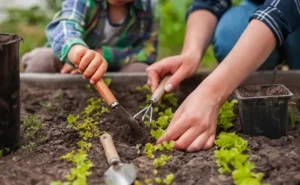








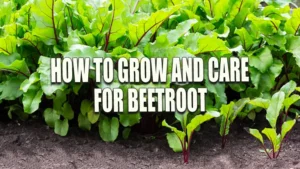


it is useful because the content you write is very clear indeed
OMEGA Romeo Eleison
April 15, 2024 10:57 am